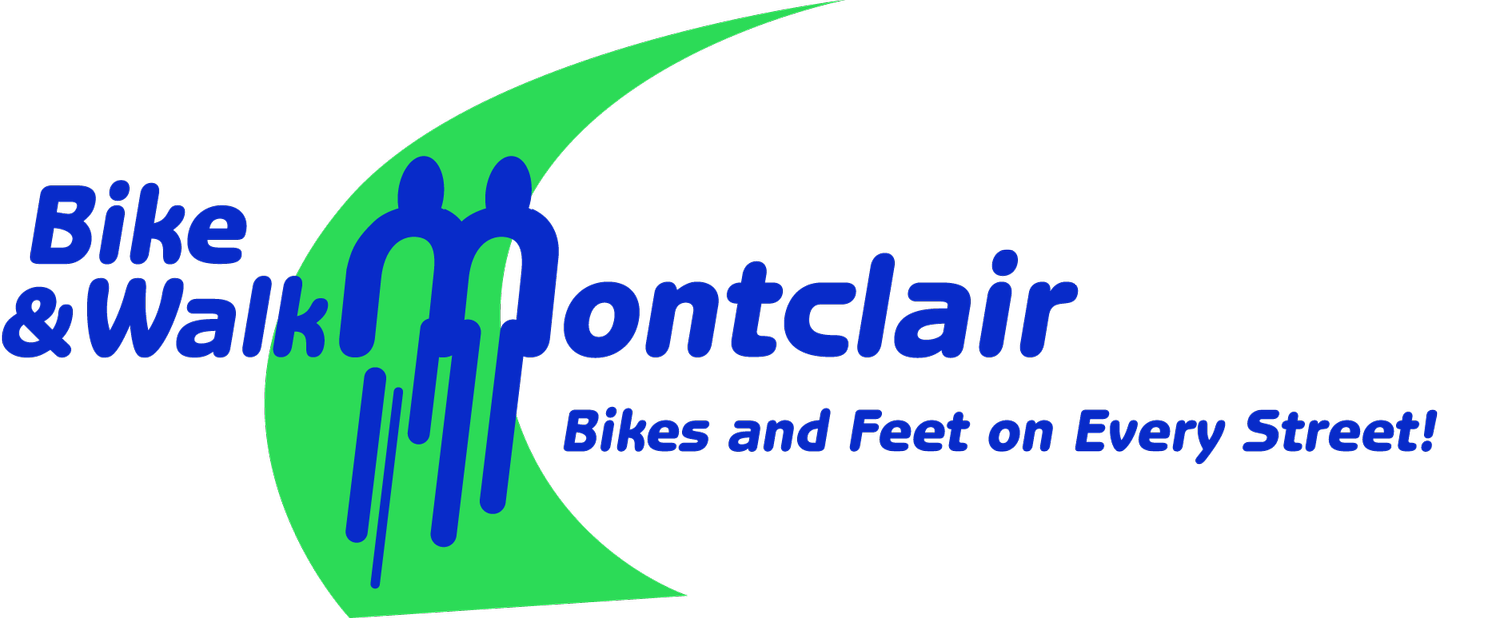Montclair weighing bike lanes, street closures during pandemic
Read article on NorthJersey.com by Julia Martin
With fewer cars on roads due to the COVID-19 pandemic, and more foot and bike traffic, advocates are seizing the moment to push for changes in Montclair.
Last week, the volunteer advocacy group Bike & Walk Montclair launched a campaign called “Reimagine Montclair” and emailed residents a survey about safer access to streets for bikers and pedestrians. Hundreds responded, with the vast majority in favor, said John Sullivan, the group’s president.
Other New Jersey towns have already made temporary changes. Hoboken and Jersey City followed New York City in closing roads for socially distanced recreation. Last weekend, Asbury, Metuchen and Princeton passed resolutions to open up more space for pedestrians and bikers by closing streets to cars, creating protected biking and walking lanes, extending sidewalks and removing on-street parking.
Montclair, with six train stations, was built with pedestrians in mind. In 2009, it was the first municipality in the state to ad
opt a Complete Streets plan, requiring that roadway projects include accommodations for bicyclists, pedestrians, transit riders and the mobility-impaired. In 2016, the town received a grant to develop a S.A.F.E. (Streets Are For Everyone) plan to encourage safe driving, bicycling and walking for users of all ages, abilities and socio-economic backgrounds.
But both initiatives have languished, while a development boom downtown has brought more density and cars. Montclair still does not have “a single foot of dedicated bike lane,” Sullivan says, and the new residential buildings, which tout Montclair’s “walkability,” have actually made the town less pedestrian-friendly. The new construction encroaches on the sidewalk and has brought many more cars and parking lots and structures to the downtown business district, he said.
In 2019 there were more than 80 crashes between cars and pedestrians or bikers in Montclair and four fatalities, according to the Police Department.
During the pandemic, streets may have gotten even more dangerous for pedestrians and bikers, even with fewer cars on the road. That’s because drivers tend to go faster without traffic to slow them down, said Arnold Anderson, a retired police detective and head of community traffic safety for the New Jersey Bike & Walk Coalition. So far this year, he said, speeding violations are up statewide and there has been a 14% jump in crashes involving pedestrians and bikers.
“It’s sad that this epidemic is the catalyst, but this may have been the only way to help people appreciate the importance of public spaces,” said Sullivan. “It forces you to see the town in a new way, to see that there is a lot of extra space that is mainly used for cars.”
Sullivan said that shared biker/pedestrian lanes could easily be integrated on some of Montclair’s streets, thanks to the town’s long, narrow design and abundance of two-way north-south streets, such as North and South Mountain, Highland, Grove and Montclair avenues. Making some one-way or permitting parking on one side only could free up street space for the new lanes; adding “ladder streets” on east-west streets such as Bellevue, Walnut or Watchung would complete the route.
“We’re not trying to take over every street, but to take back some of the redundant car space where we can,” he said. “Right now there is no dedicated space for anything other than cars and that’s just unacceptable.”
The Town Council, which for years has balked at adopting the S.A.F.E. Streets plan because of fears that bike lanes would exacerbate a parking shortage downtown, seems to be open to experimenting on a smaller scale.
Mayor-elect Sean Spiller said he will present some options for “rolling street closures” during the pandemic, such as Church Street and Watchung Plaza, at his first Town Council meeting as mayor on June 9.
He acknowledges that closing streets can presents problems. A few years ago, a move to close Church Street was abandoned when those who lived there objected.
“We’re faced with, when anyone on whatever street has to leave for work, how do you shut down the streets?” he said.
Still, he’s willing to try. “A lot of the time, you need to see proof of concept, to see if an idea is good or bad, to show if it works,” he said.


